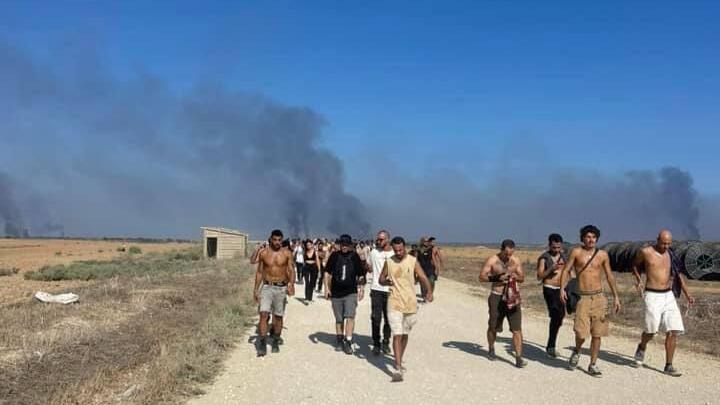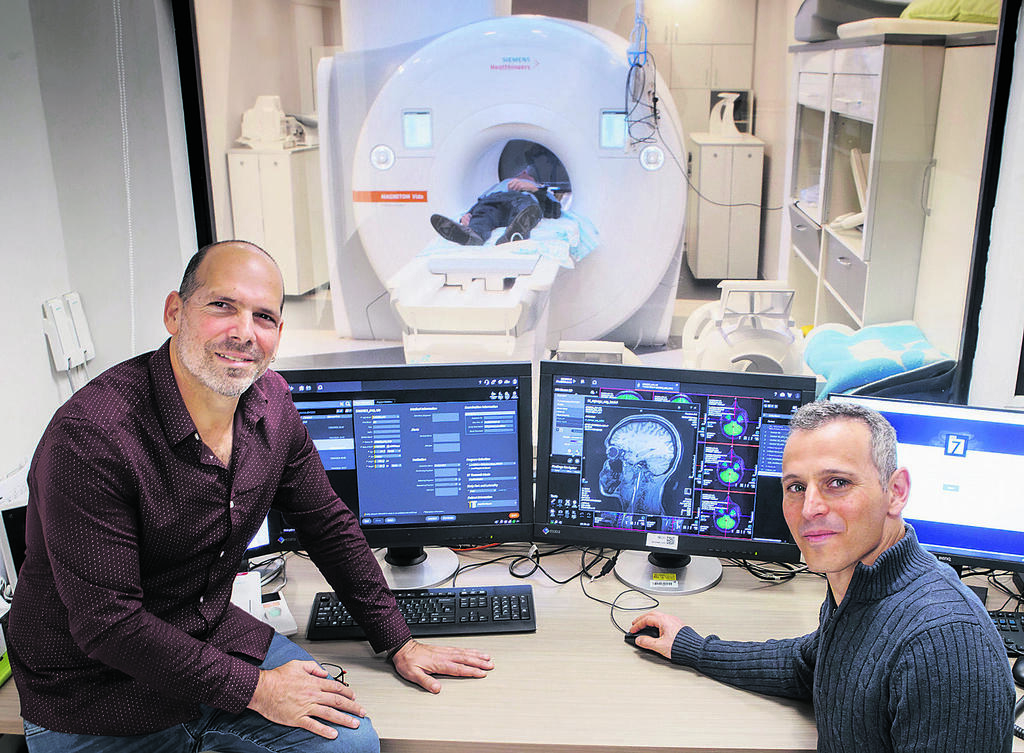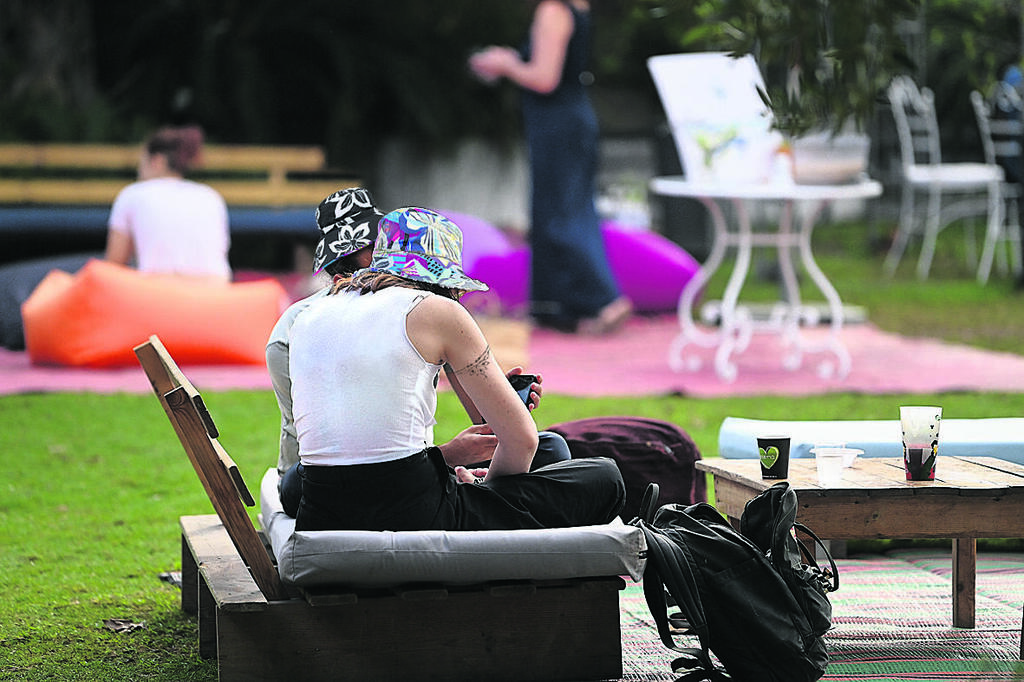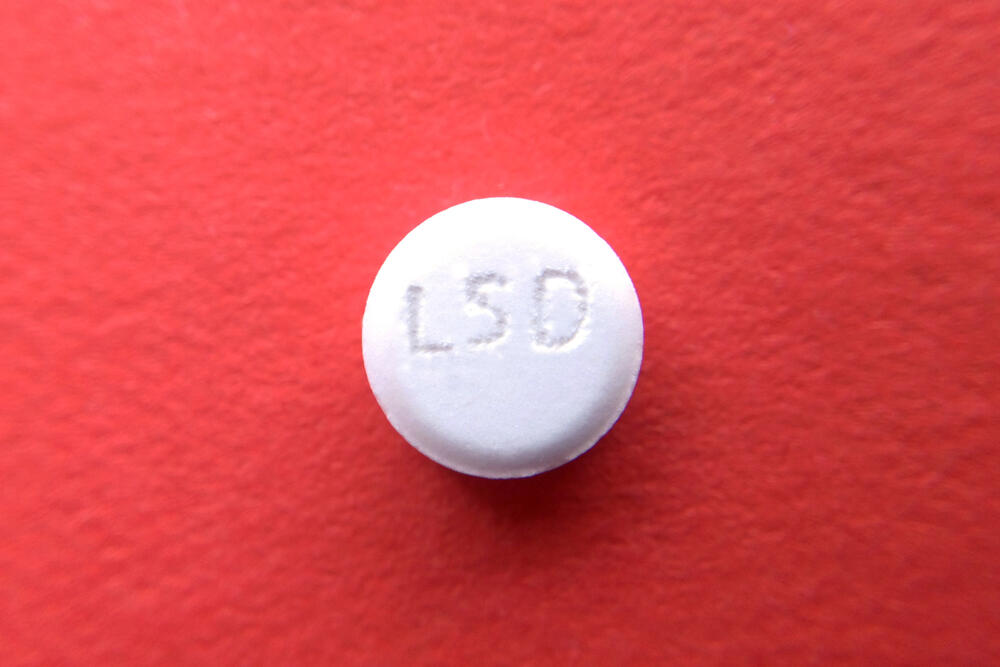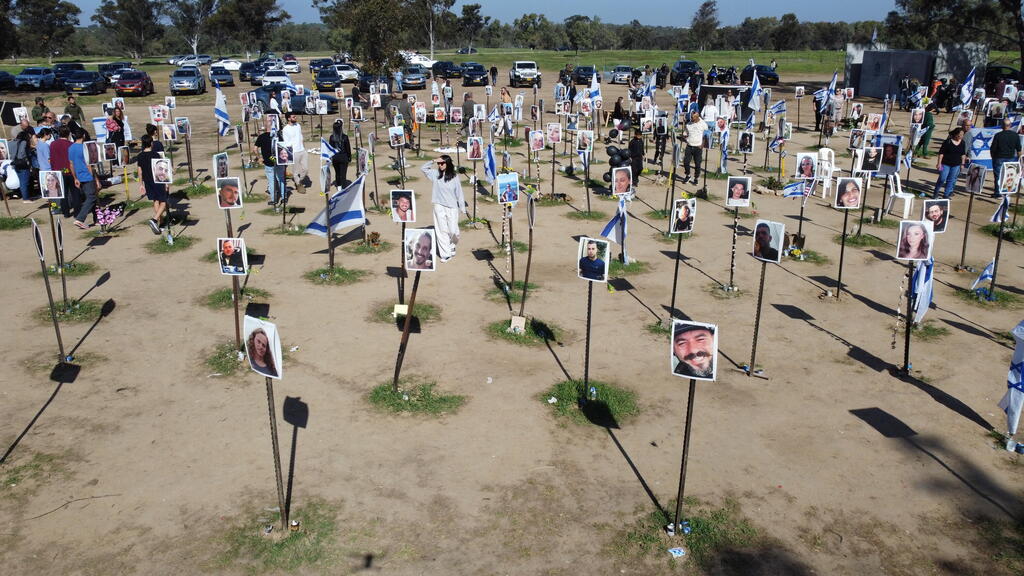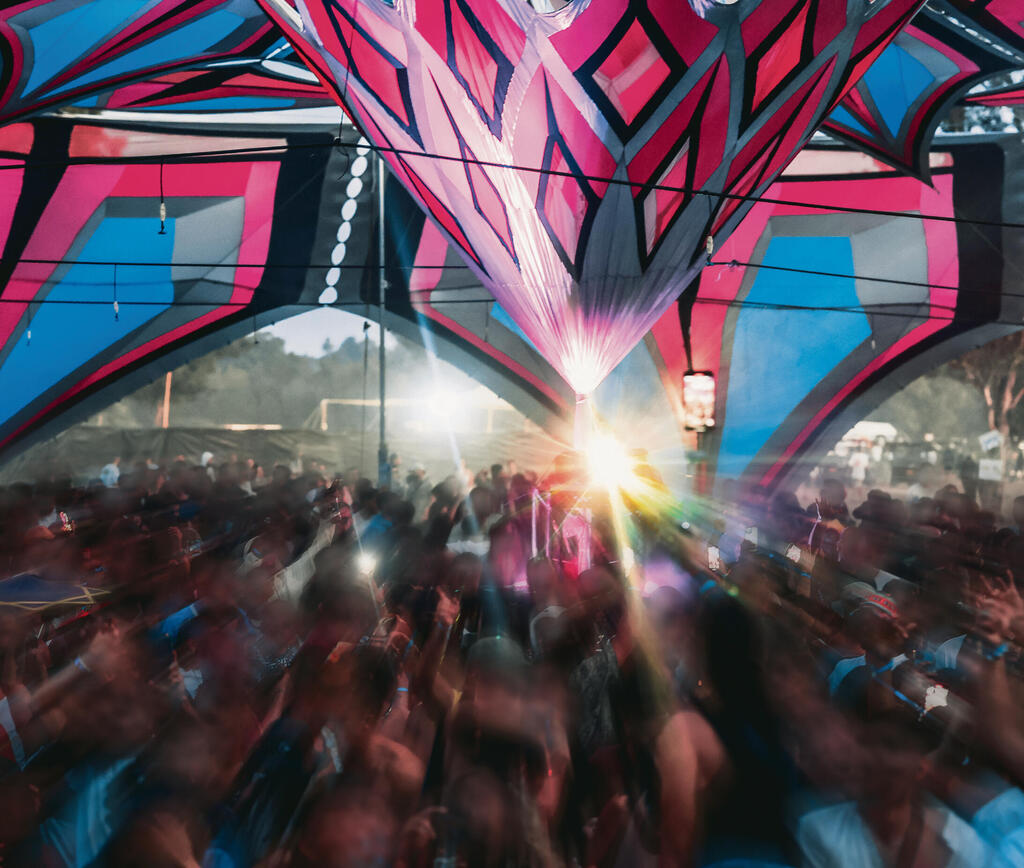Getting your Trinity Audio player ready...
Only a few short hours into the horrors of October 7, Prof. Roy Salomon set up a group of counselors volunteering psychological first aid to survivors of the Nova festival and other raves that took place in Gaza border towns that horrific day five months ago. Yes, it’s been five months. Five months dammit. And the end is nowhere in sight.
“I have a personal connection, both theoretical and practical, to raves and psychedelics. I’m connected to the community,” says Prof. Salomon who, as Primary Investigator of the Lab of Consciousness and Self at the Department of Cognitive Sciences at Haifa University, researches psychedelia and psychosis and the neurological basis of self and reality.
“We wanted to reach as many people as possible, as fast as we could. Initial intervention with treatment by qualified professionals is important in reducing the transition from trauma to post-trauma. Because we come from within the trance tribe, people saw we cared, opened their hearts and told us things they perhaps wouldn’t tell a health service psychologist.
The group of psychologists set up by Prof. Salomon became ”Lev Batuach” (SafeHeart) which has since grown and now includes over 400 professionals who have treated thousands of people and, to continue its activities, has started a crowdfunding campaign. One of its founders is Igal Tartakovsky, who has been erecting “Safe Zones” for emotional support at festivals and nature parties for the last decade. “One story that resonated with me was a that of patient who described how she hid behind a tree and felt she was communicating with it and that the tree was protecting her,” he said. “In all that horror, she felt protected and had an enormous sense of gratitude to the nature around her that was protecting her. “
Since October 7, Tartakovsky has met survivors who were in a broad variety of states of consciousness when the attack began. “People who take mind-altering substances tend to time the escalation with the sunrise, so the attack came at the most intensive stage of the trip. Some people describe how at the beginning, they didn’t know if they were seeing rockets or fireworks. Some, especially those who’d taken stimulants, tell how the substances actually helped them escape in terms of drawing on available energy. For a lot of them, when they realized they were in a life-or-death situation, the adrenalin surged and overcame the effects of the substances. Others who had taken more sedative substances like ketamine which are harder to get out of, were experiencing strong sensory attacks that clouded their consciousness, physically encumbering them and it took them longer to get organized. It works in all directions.”
“Some report that they managed to get themselves together and run, but that when they reached hiding places in bushes or shelters, the adrenalin subsided and the visuals and psychedelic symptoms returned. It confused some, while others say it helped them see the situation from a different perspective. Some people told me they were having an actual conversation with God.”
For Prof. Salomon, initial psychological support for survivors was just the beginning. “After stabilizing the treatment, I realized we needed more research knowledge. I looked for articles about the connection between psychedelics and trauma – and there aren’t any. There’s never been a mass trauma that took place on mind-altering substances – or at least it’s never been recorded in the known history of the world. When I realized the extent of these gaps in our knowledge, I called Roee and said “There’s something here we need to research.” He quickly understood its importance and we started building a research plan.”
Roee is Prof. Roee Admon, a neuroscientist specializing in researching the neurological mechanism of trauma and resistance to trauma, is also from Haifa University’s psychology department. The combination of a psychedelia and trauma expert who’ve been good friends for 20 years, although they’ve never worked together before, has led to one of the most exceptional, fascinating and groundbreaking studies not only in Israel but worldwide, aiming to learn the connection between trauma and psychedelia.
From the rave, 364 revelers were murdered and never came home. Hundreds more were injured and 44 were kidnapped (a small number returned as part of the deal). The study, which is ongoing and that I had the privilege of following for a few weeks, addresses the effects of psychedelic substances on trauma processing, both in real-time and over time. It examines how the traumatic event and the mind-altering substances influenced one another and, by understanding what happens in the mind and body when trauma lands on a psychedelic platform, will also help explore new treatment methods.
A thousand Nova survivors are taking part in the study – around a quarter of the young people who attended the rave – the majority of whom took psychedelics there. A control group of 200 revelers, who attended a different rave the same day that did not include any trauma, will be incorporated into the study at a later stage.
They laugh and we cry
About trance: In his monumental book “How Music Works”, musician (Talking Heads) and philosopher David Byrne lays out a theory whereby music is primarily created for the space in which it’s heard: Opera is written for grand halls; jazz was created for little, smokey clubs; disco for dance floors and so on. Music sounds best and optimally fulfills its purpose, in these settings. The space for which trance was created is nature – a hall with no walls. The infinite skies are the ceiling and the Good Earth is the floor.
The time trance sounds best is sunrise as darkness gives way to the sun’s soft light as the moon and the remaining stars still hang in the skies as a reminder. They’ll soon fade and be gone. This is the euphoric moment, the moment for smiling and hugging each other. The dancers with their eyes shining, stamp their feet on the ground like an ancient tribe in a sacred ritual causing the planet to turn one more day. Their souls freely soar and they’re at one with the whole universe. These are pure moments of absolute freedom, love and enlightenment. In these moments, trance is much more than music. It’s an emotional state. If you’ve been there, you’ll know. If you haven’t, you’re welcome to try.
Lots of my zeniths of happiness have occurred at this time in deserts and forests to the sounds of this beloved music. I remember them with a smile within – and then I remember the October 7 massacre that took place at exactly this hour of grace and the tears wipe my smile away. Everything that happened on October 7 was beyond terrible and horrific, but what happened at Nova burns with a special kind of sting. I wasn’t there that day, but I could have been. It’s by a tribe that was slaughtered there. These are my people, my brothers and sisters in the most beautiful moments.
Our first meeting was held in Salomon’s lab in Haifa. Although the most head-turning subjects are researched here, everything seems very settled in his mind. The friendship between Salomon and Admon and their mutual admiration is clear to see. They complete one another not only in their research but in their personalities, names and even their appearance.
Roy Salomon is more fire: a smiley man with a loud voice. He speaks fluently and decisively and his presence fills the room. Roee Admon is more water: his voice is quiet, his eyes are serious, his body is lean and he scrutinizes each sentence that comes out of his mouth. If, at the start of the meeting, you had to guess which of them researches trauma and which psychedelia, i.e. which one meets people at their most vulnerable moments and which one studies them during their adventures, you’d be spot on.
They both copiously guard their subjects’ privacy, but it’s clear quite how much they’ve become attached to them, and have even fallen in love with them. “These are kids with a lot of strength,” says Admon. Salomon is impressed by their gallows humor: “They tell us stories you wouldn’t believe. They laugh and we cry. Their honesty and ability to talk about how hard it is surprises us,” says Admon.
The subjects’ sensitivities and difficulties present the study with logistic challenges that are conducted at a number of sites across the country to make it easier for people to get there. The two also visit people in their homes. “It’s unlike any study we’ve done before,” they tell us.
Around 30 people are working on it, gathering and analyzing data. Time also plays an important role. The subjects must be caught at the present stage, known as “pre-trauma” (from two-to-three months from the trauma through to six months following the trauma) before it fades away into the sands of time. This is made no easier by the fact that some subjects can lose the motivation to participate. Some travel overseas to get away and move on, as others dive deep into themselves, using more drugs in their efforts to forget. It’s all done gently, with endless care. It sometimes seems that the two, Admon and Salomon, aren’t only studying the survivors, but are also trying to protect and save them.
Our second meeting took place at the medical imaging institute at Haifa’s Rambam Hospital where some subjects are studied using MRI scans examining their brain activity.
The MRI, a huge tube with a magnetic force 30 thousand times greater than the Earth's magnetic field, is the most in-depth research stage, consisting of several levels.
In the first stage, the subjects answer detailed questionnaires including basic data of age, gender and family status through to what they took at the rave, when, with whom and where they were when everything happened.
The second stage involves deeper scientific information. Each subject walks around for a month wearing a sensor - a smartwatch measuring their pulse, sleep, movement, etc.
Admon took this method from his fascinating studies of various interpersonal factors in response to stress and trauma. Admon: “This is objective, high quality, long-term data that’s measured in a natural environment. I believe this is what’ll give us the most information.”
One of the important things the watches measure is sleep and its quality. Admon: “A person might tell us ‘I’m okay’ and they’re not, and sometimes people think they’re not alright, but they’re actually displaying perfectly normal patterns. Their pulse as they sleep can indicate their condition. Abnormal sleep is a risk factor for developing post-traumatic disorders. There’s the amount of sleep but, more importantly, the regularity of sleep habits. We recently conducted a study on 669 (search and rescue unit) soldiers that indicates a relationship between physiological changes in heart rate during sleep and psychological resistance to trauma. As for people whose sleep quality has declined from Nova through to now, I can predict that their chances of better dealing with trauma - in the future too - will be lower.”
“A great many emotional and cognitive processes occur during sleep, and they’re extremely important in terms of the ability to overcome the traumatic event."
In the third stage, saliva samples are taken from subjects. “You can get a lot of information from saliva,” Admon says. “Like changes in certain hormones. Lots of physiological mechanisms can be deciphered from saliva, including long-term fatigue and chronic stress.” The plan is to take samples every few months and examine the changes. The study should span three to four years.”
The fourth stage is a computer game. "Lots of researchers treat post-trauma as a memory problem," says Salomon. "It’s treated as the inability to transfer a traumatic memory into the past, so it remains in the present. Another theory contends that post-trauma is a problem of fear obliteration - you don't learn that whatever was dangerous is in the past and that you can now relax. I mean, you can view it as a learning process. If you don't learn well or refuse to learn, you won't be able to obliterate the fear. It then inflates and you’re afraid of more and more things."
"What we're doing might seem a bit funny," says Salomon. "It's a game on a cellphone. You’re a fisherman and you have two lakes. You choose one of them and catch a fish. You then have to, once again, choose a lake. Which will you choose? If you move on to the next lake, it may indicate you’re taking risks, and if you don’t, it means you’re not. From all of this, we extract how much people learn from experiences and how open they are to trying new things. You can diagnose quite a lot from this.”
“The next stage is MRI. I remove all metal objects from my person and lie down in the metal tube. The magnetic force installs in me a strange sense of calm.”
What are we looking at here?
Salomon: “In the first stage, we let the person lie down for six minutes - without doing anything and with no external stimulation. You can learn a lot from brain activity patterns during rest. In the next stage, we stimulate the system very gently. Just as we monitor the heart during exertion, we’re actually increasing the emotional pulse by screening a video of a trance party – not in Israel and with no connection to Nova. As we do this, we monitor the heart rate to ensure it’s not too stimulated. When different people watch the video, their brain activity is quite similar, so you can decipher abnormalities. We then bring the emotional pulse back down and watch systems get back to normal.”
Admon: "Here we test the ability to return to routine. Physiological and psychological responses to stress, such as an increase in sweating, heart rate, brain activity in certain areas, and an increase in the release of certain hormones are normal. It’s even a healthy response and we can measure it. We’re looking at what happens after the stress when recovery should come about. In the relief phase, we identify people who don’t recover, or respond as if nothing happened. This is unhealthy and abnormal. If I had to predict who’ll develop post-trauma in the future, the inability to return to normal from a stressful situation is a better indicator of who’ll end up in a high-risk group than how someone responds to the stress itself."
The study also includes in-depth interviews. "There’s something we miss in all our quantitative parameters," says Salomon. "The person's story and how they tell it. Their voice, speed, the quality of the story etc. It’s also often important for the subjects to talk about what happened to them."
Why do you expect this to converge when there are such great discrepancies between the subjects and the substances they took? Scientific research should produce accurate results. How will you do that?
“There are several levels of results,” says Salomon. “At the immediate level, I can pass on information to therapists, pointing things out. On the scientific level, the burden of proof is greater and it takes time. Proving things neurologically is very complex. There are big questions about the convergence of trauma and psychedelics that demand caution. The study can affect people’s lives, treatment and policy in general.“
Admon: "That's why we ask a lot of questions and collect as much information so we can deduce statistical insights. Yes, there’ll always be variations you can't explain but, in the end, you want to believe there are common coping mechanisms that have real meaning such as sleep patterns or certain brain activity patterns. We’re different from each other, but we’re also similar."
Initial findings are due to be published over the coming weeks and months. I leave the imaging institute and walk the streets of Haifa a little on my way to the train station, looking at the people around me. Most appear quite normal, emotionally healthy. But after October 7, what can we really know about what the man or woman we’re looking at has gone through? You can’t see the deep wounds. The only thing we can and must do is be nice to each other.
Its hard to recall what had happened there
The study deals with the connection between trauma and psychedelics. Whereas, sadly, trauma is well known and is a well-established field of research, certainly in Israel, psychedelics are much more mysterious - despite our now being in what’s being termed a "psychedelic renaissance." This denotes the growing interest in the use of psychedelic substances, primarily mushrooms and LSD but also MDMA and ketamine (which isn’t psychedelic at all), for treating post-trauma, depression, addictions as well as recreational purposes. “Micro-dosing” - taking small quantities of these substances, (mainly mushrooms and LSD) to enhance creativity - is becoming more widespread. It’s become a serious trend in Silicon Valley high-tech companies, as well as in Israel.
Drug use, and let's face the truth without being sanctimonious about it, like at other raves, was very prevalent at Nova. Lots of ravers took a variety of drugs to dance and have fun. What drugs did they take? What didn’t they take? Drugs can be dangerous. They’re also illegal.
“Psychedelics is an umbrella term,” says Salomon. “But there were obviously all sorts of substances there. We divide them into three families: Psychedelics (mushroom, LSD, etc.); stimulants (uppers like speed and cocaine); dissociatives like ketamine, (originally a horse anesthetic); and empathogens like MDMA (on which Ecstasy is based) which isn’t a psychedelic drug. MDMA doesn’t cause hallucinations but does cause an emotional change and creates a sense of love and euphoria. Complicating matters, there was also quite a lot of substance mixing going on there. And all this is on a platform of alcohol and marijuana.“
Drugs are also a generational thing. We’re the same generation. Drugs on offer to us included more or less the list you’ve mentioned. There are lots more drugs on offer today, more substances – all kinds of kiosk drugs, substances with names like 2C, MM3 & 4, Doctor etc. How does your study deal with these drugs?
Salomon: "Yes. There are drugs like 2C, that are a bit like the juice of the salad - what’s left at the bottom of the dealer’s pile. We treat all these as stimulants. We try to organize our data, dividing the drugs into these families. Some things haven’t been resolved, like unknown substances or people who mixed six substances and it’s not clear what exactly went on there. But this is the minority. Most people took one or two substances at a time."
Does taking psychedelic substances change the self? If so, to what extent?
“There are several levels of answers. Yes, it is an experience that subjectively changes a person. One of the things that stand out among most of the subjects, from the 60s through to the present day, is that they rank the psychedelic experience among their lives’ most significant. That said, we recently conducted a study examining whether the subjects changed their perception of their physical self – the way the brain makes me understand I’m me. We took people who’d taken a lot of psychedelic substances who said it had changed them and compared them to psychotics who understand their physical selves differently. We showed that they do feel that, but the evaluation doesn’t show, a change in perception of physical self. It looks like the change is at higher levels, possibly in the way you observe your own physical self. So, some levels change more, others less. The fact that you know there’s a different way of experiencing reality already gives you a different perspective. It’s like being overseas for the first time. Just knowing there are other places in the world somehow changes you.”
I like the example of traveling overseas. That’s why they call the experience a “trip.” But it’s hard to describe - and definitely study - the psychedelic experience. It’s so elusive.
“A prominent characteristic of the psychedelic experience is the inability to explain or clearly remember what happened. It usually remains on the level of ‘I saw colors’ and ‘It was amazing’. People describe visual experiences because it’s relatively easy to describe. But the change in the sense of self is much harder to describe, so people say ‘I wasn’t myself’ or ‘I was at one with everything’. What complicates things for us is if you take a person and give them the same substance a week later – they won’t have the same experience.”
In psychedelic language, it’s called “set” and “sting.” Set are things that we bring with us from home – our history, gender, age, etc. Sting is the place you were and the people you were with when you took the substances.
“There are theories claiming that part of the psychedelic effect is caused by increasing the flexibility of the brain that’s wired around the experience. The brain is constantly changing. A big event will leave a big mark,” says Salomon.
So, it sounds like a traumatic event like Nova under the influence of psychedelics can be particularly dangerous.
“Some believe psychedelics can’t make the brain wire itself around the trauma and not forget it. There are lots of treatment theories than can be supported by studies.”
Although there are no previous studies on the matter, what’s your approach to the connection between trauma and psychedelics?
Admon: “The brain processes reality differently under the influence of drugs and alcohol, so will respond differently to trauma under the influence of psychedelics. Coming from a place of trauma, I ask whether it affected the way the brain and physiological systems reacted and how it affects these reactions over time. For me, the study’s big question is what the chances are of developing post-trauma. The question we’re actually examining is the way in which the experience is imprinted and remains in the brain over time.”
Do psychedelics also affect the ability to recover from trauma?
“This is exactly what we’re trying to check. Whether substances change the timeline for physiological, emotional and neurological recovery. We estimate that the effect is influenced by the psychedelic substances, but we may well ask whether this is because the experience itself was experienced differently, but perhaps the ability to process the experience - turning it into a memory - is also influenced by the substances. Marijuana also influences this ability.”
Salomon: “Or both, together.”
Will the trauma be greater if it occurs during a person’s first use of psychedelics?
Admon: “It looks like it, yes. But evidence shows that most of the people at Nova weren’t using drugs for the first time. Moreover, in trauma, subjective things are contingent on a variety of aspects. Psychedelics aside, there are lots of things that make you more resistant or vulnerable to PTSD like where you were raised, your emotional and cognitive abilities, etc. I’m interested in the differences in the ability to deal with the experience, maintain mental health and not develop PTSD (Post Traumatic Stress Disorder).
On what does recovery ability depend?
“We can talk about two timelines. Firstly, everything a person brings with them to the event - their history, age, gender, previous traumas, substance use, etc. And secondly, everything that happens after the event – how people deal with it and what support they have. We’re asking whether we can know ahead of time how a person will respond to trauma even before they’re exposed to it and whether, after the exposure, we can know what treatment would be best for them.”
Does our amassed knowledge about trauma allow us to predict who’ll be more prone to post-trauma?
“Generally speaking, women have higher incidences of post-trauma such as depression than men. Let me qualify this: it may be partly due to the fact that it’s easier for women to express and admit vulnerability and seek help. Among men, once again, generally speaking, there’s a higher rate of addiction and drug and alcohol use, so they’re not diagnosed for depression but rather for addiction disorders.”
Does the female brain differ from the male brain?
“You could say that, but it’s not necessarily more vulnerable.”
“Another at-risk group is people who experienced trauma as children. They pay dearly when it comes to chronic stress and hormonal reactions that go wrong. This is a factor that can very much endanger the ability to deal with such events in adulthood.”
So, what doesn’t kill you, doesn’t necessarily make you stronger?
“It can go either way. Trauma at an early age has a significant impact on the systems we use for emotional control. Hormonal systems that help us react appropriately to stress develop incorrectly. It leaves emotional and physiological scars that reduce the chances of coping adaptively with trauma as adults."
The difficulty in proving causality is a further complexity. “Almost all studies are conducted after the traumatic events, and it’s hard to know whether what you’re looking at resulted from the trauma or whether there were previous tendencies that caused people to be counted among the 15% suffering from PTSD. To examine this, in collaboration with Prof. Talma Hendler, we’ve conducted a series of studies on IDF soldiers aiming to examine whether a neurological pattern existed before exposure to trauma and whether we can predict declension to post-trauma.”
What about factors for recovery from trauma?
Salamon: “Social support is one of the most important things – not being alone in the world. Marriage is a resilience factor. Family and friends etc. are important. We were very concerned about people living alone, but must overcome it. Just think how many people experienced trauma in the army and got over it.”
Admon: “I wouldn’t include soldiers in the equation. It’s different. They chose it and were trained for it. The people at the party weren’t trained for it. A better comparison would be to people in earthquakes or road accidents – civilian situations imposed on people with no prior warning or ability to protect themselves. Here, you have higher trauma numbers and yet most people are fine.”
Country suffering from post-trauma? Not necessarily true
They’ve been surprised by the response to their study. “I was thinking around 10% would agree to come, but approximately 60% of those we approached agreed,” says Salamon. “The first thing most of them say is ‘Thank you that someone’s researching this’. The study confirms the magnitude of the event they experienced. It's important for them to come. They feel this is how they’re helping others and that something good can come out of everything they experienced."
The average age of the subjects is 26. “Cruel fate created a natural experiment on large numbers,” says Salomon. “It may allow us to better understand the significance of psychedelics during trauma. The fact that they all experienced the very same event at the same time at more or less the same age, is significant and is strong for our research. It allows us to look at the process in real-time and follow it.”
To what extent is youth connected to the ability to experience trauma more deeply and, on the other hand, recover from it?
Admon: “The brain ‘stops’ and stabilizes around the age of 25. The white matter carries on developing. There’s still a lot of flexibility and great ability for rehabilitation.“
Prof Admoni: “It’s still too early to tell both for those in bad shape and for those doing better. For many, life will never be the same. I suspect lots of them will have scars preventing them from realizing their full potential."
How’s the mental health of friends of people who survived the massacre?
“It varies,” says Admon. “We keep being told we’re a country suffering from post-trauma. This isn’t necessarily true. As I said, only around 15% of the people exposed to trauma have been diagnosed as suffering from post-trauma. This also applies to the most difficult traumas. Most people are going to be okay. Most people have the ability to deal with experiences and retain their mental health without developing PTSD. Some will grow from this and will be better than before. Trauma can lead to growth. I hope and believe that the event won’t prevent most of them from realizing themselves fully, having families and finding meaning in life.”
Cautious as ever, he continues: “It’s still too early to tell both for those in bad shape and for those doing better. For many, life will never be the same. I suspect lots of them will have scars preventing them from realizing their full potential. Even without being diagnosed as post-traumatic, they’ll have cognitive, decline, and a decline in concentration, control of emotions, outbursts of anger, etc."
Do you think the figure of 15% of people that will suffer post-trauma will be sustained in an event such as this, that was both massive and emersed in psychedelics?
“We don’t know,” says Salomon. “Psychedelics are a question mark here. We hope it won’t change the percentage. As for the mass element, the effects aren’t yet clear. On the one hand, they can get support and good treatment, but on the other, this is an event that isn’t over yet.”
Admon: “Unlike a road accident, this is an event that’s far from over. It definitely has some effect. After all, there are still dozens of hostages from the rave that haven’t come back yet. It creates a further potential for vulnerability.” Salomon adds: “And some of them have been evacuated and haven’t gone back to their own homes. Others were called up for emergency reserve duty, finding themselves in Gaza a week after the rave.”
Salomon further adds “Time passes. At the beginning, they were very invested in getting back to their lives, but their emotional strength is eroding little by little. The country’s also beginning to move on.” Admon says “Lots of them are beginning to feel the load just getting heavier and the sense of being a little alone.”



